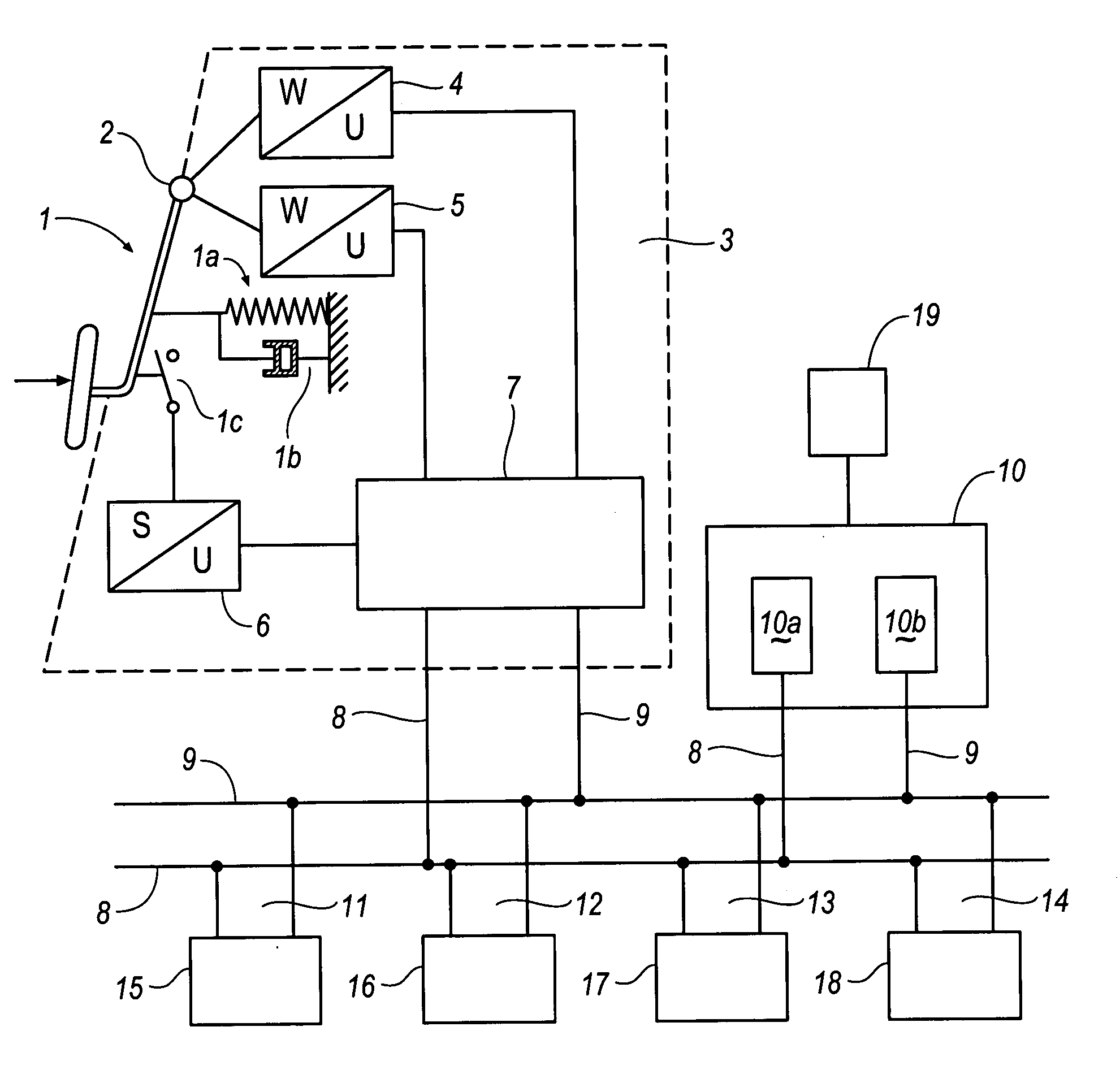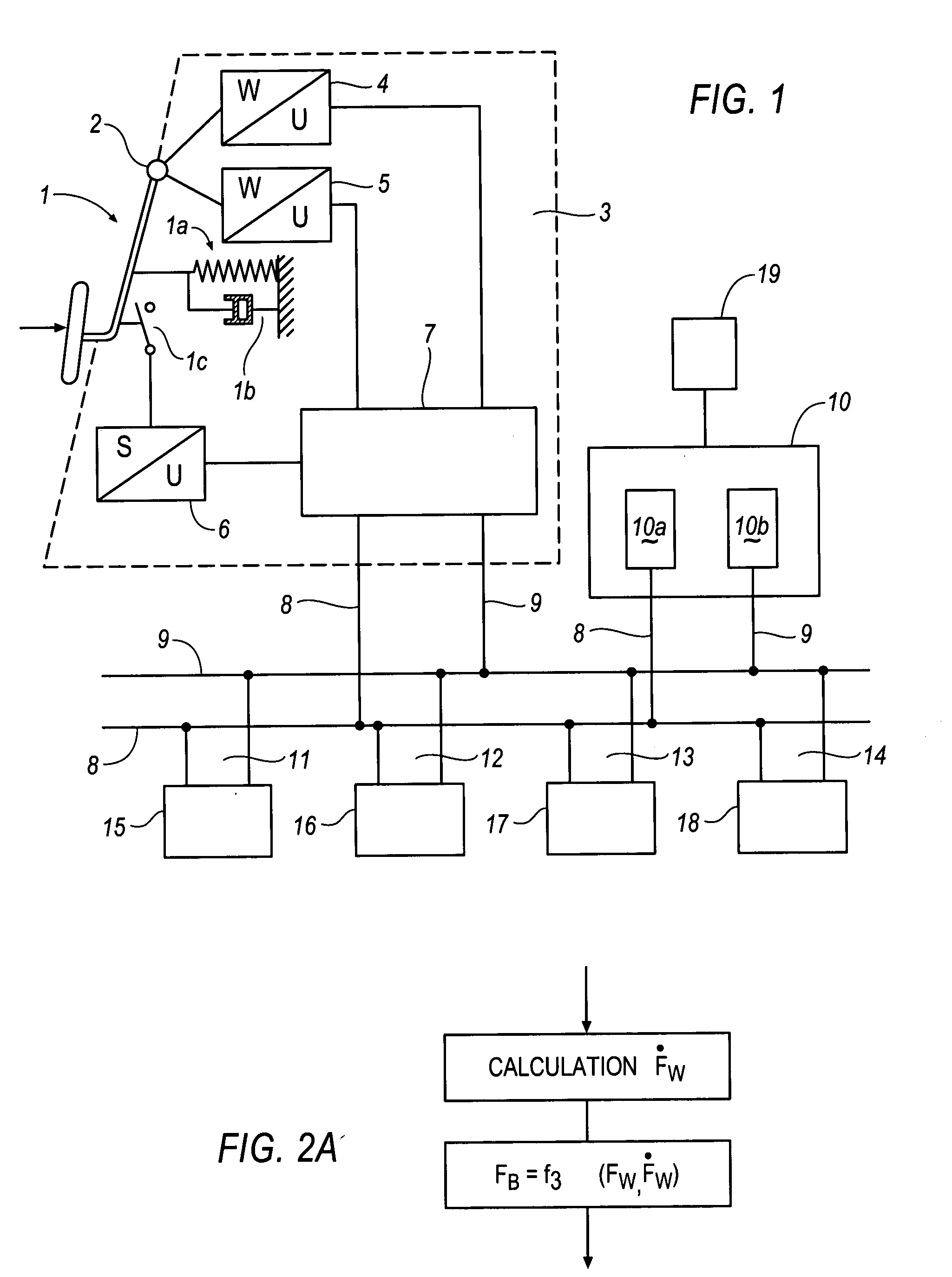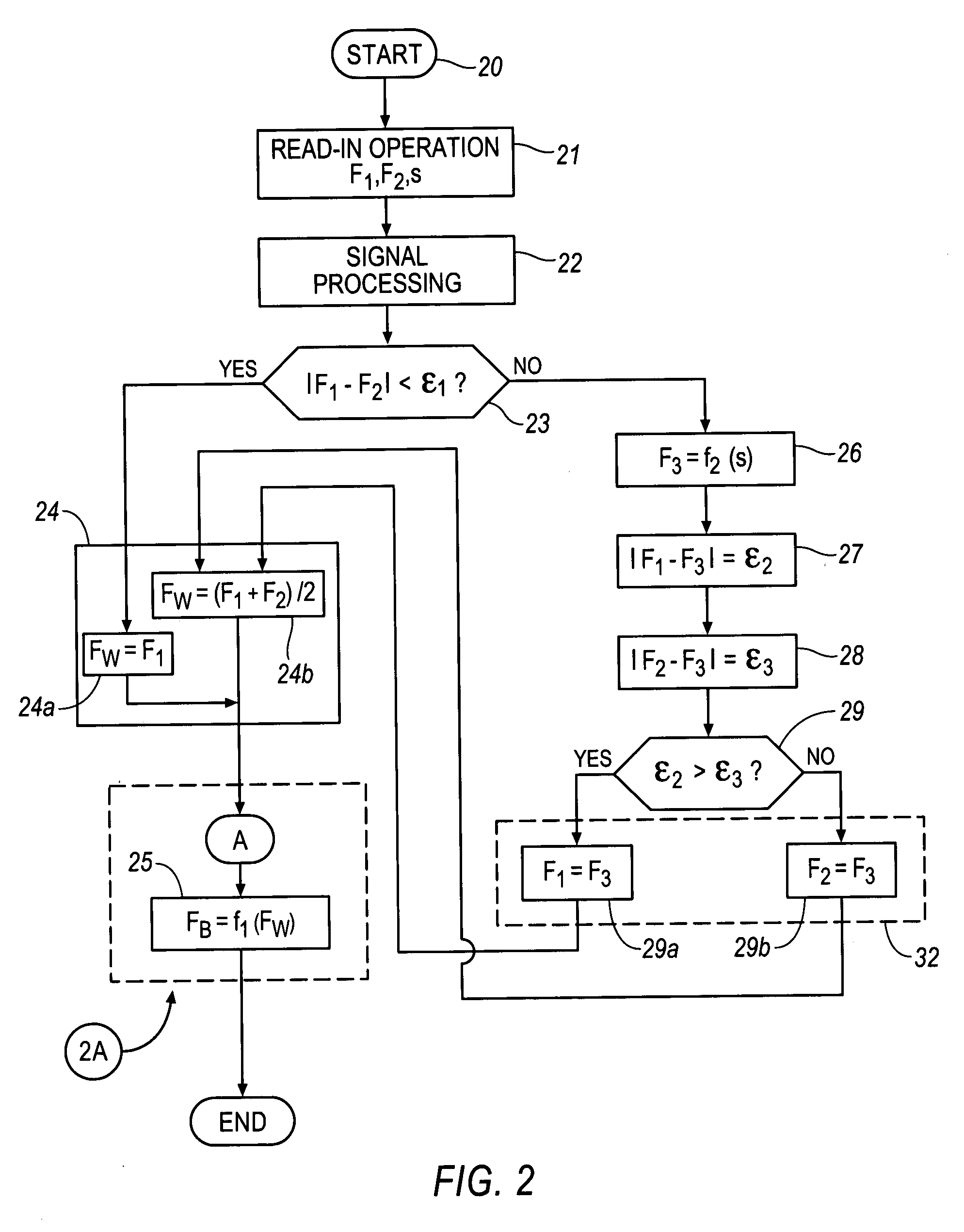Method and device for controlling or regulating the brake system of a motor vehicle according to the "brake by wire" principle
a technology of brake system and motor vehicle, applied in the field of vehicle brakes, can solve the problems of limited number of recognizable types of faults, safety of brake system by wire, and complex design, and achieve the effect of improving safety, reliability and availability
- Summary
- Abstract
- Description
- Claims
- Application Information
AI Technical Summary
Benefits of technology
Problems solved by technology
Method used
Image
Examples
Embodiment Construction
[0029]FIG. 1 shows a block diagram of the basic structure of a brake system according to the brake-by-wire principle of the present invention. The brake system exhibits a brake pedal 1 with a coupling having known mechanical pedal means, which reproduces the behavior of a conventional brake pedal that is connected mechanically to the brake system. These mechanical pedal means can be a mechanical element with a reset mechanism, e.g. a spring 1a. Reproduced hydraulic or pneumatic arrangements 1b are feasible, too. Characteristic of the pedal actuation is the foot force exerted by the driver, which is expressed in a corresponding pedal actuation force and / or the foot travel that is reflected in a corresponding brake pedal travel S or in a brake pedal angle W. These reproduced arrangements 1a, 1b can be single items or can be provided in duplicate form so as to increase the safety (redundancy). The characteristic values S or W for the pedal motion are sensed by a pedal module 3, which e...
PUM
 Login to View More
Login to View More Abstract
Description
Claims
Application Information
 Login to View More
Login to View More - R&D
- Intellectual Property
- Life Sciences
- Materials
- Tech Scout
- Unparalleled Data Quality
- Higher Quality Content
- 60% Fewer Hallucinations
Browse by: Latest US Patents, China's latest patents, Technical Efficacy Thesaurus, Application Domain, Technology Topic, Popular Technical Reports.
© 2025 PatSnap. All rights reserved.Legal|Privacy policy|Modern Slavery Act Transparency Statement|Sitemap|About US| Contact US: help@patsnap.com



